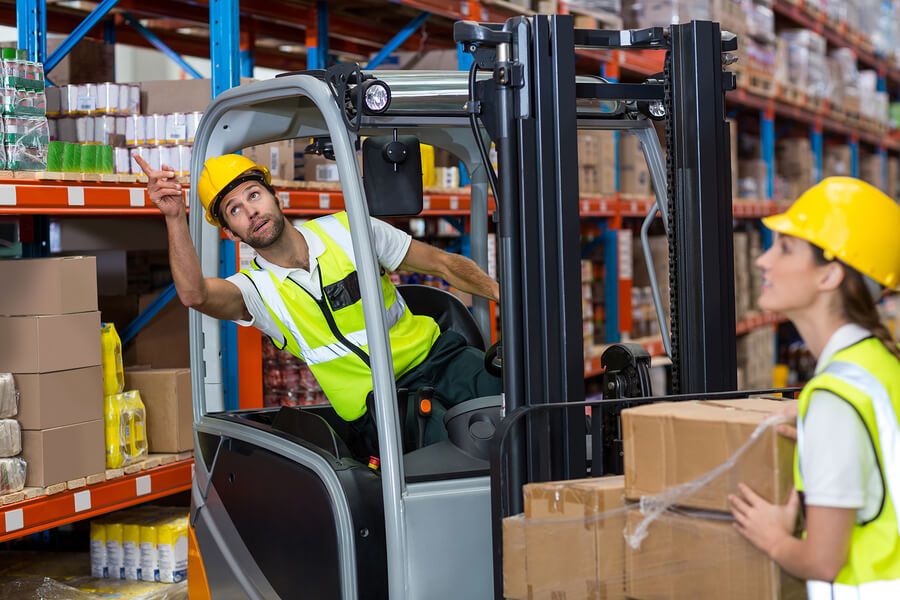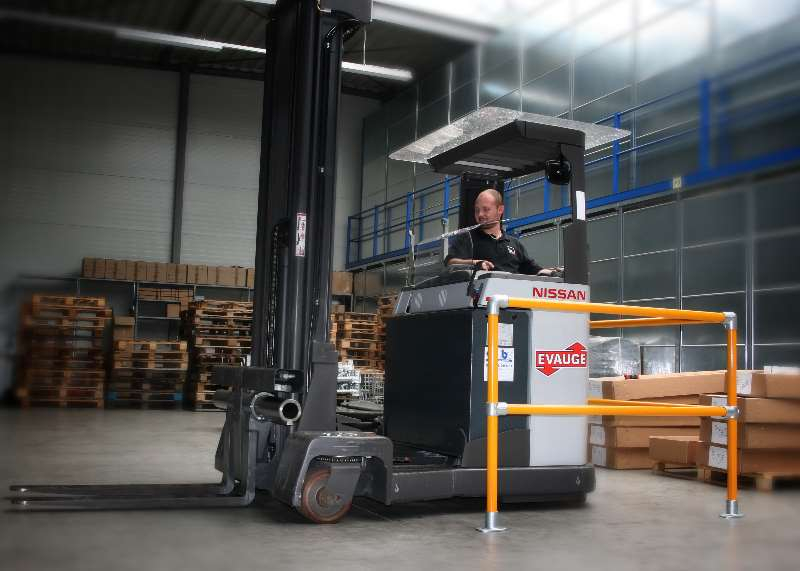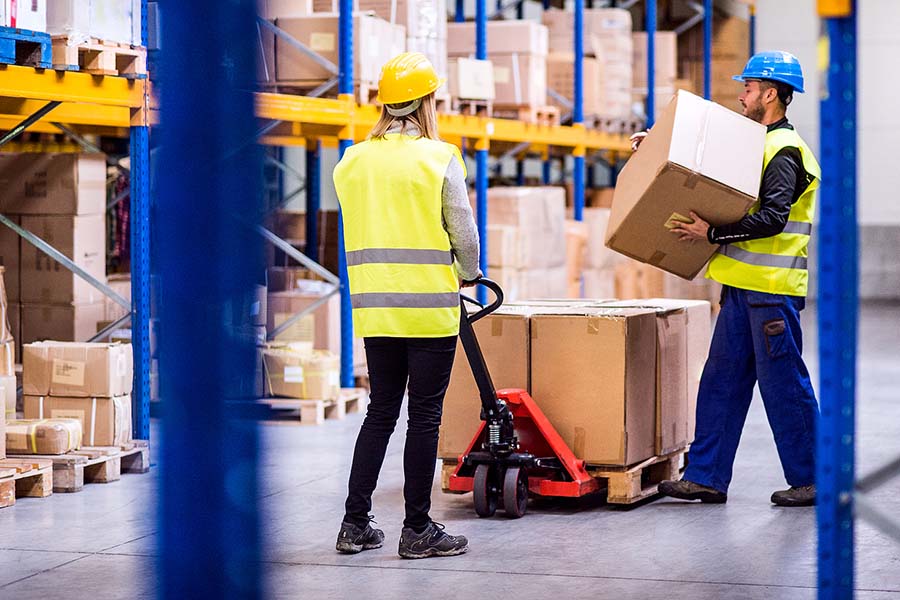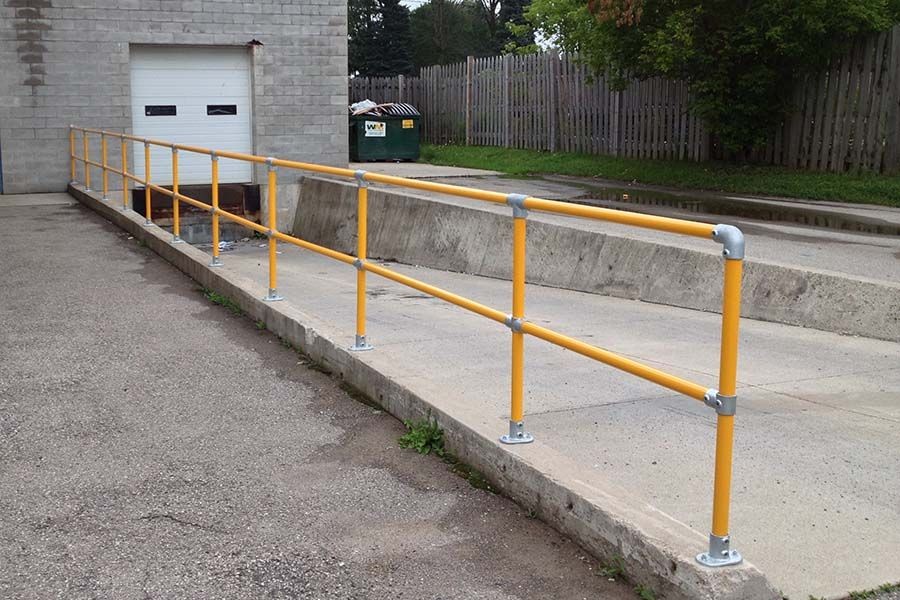9 Safety Hazards in Warehouses

Warehouses contain a wide range of potential hazards that will be discussed below, but one of the biggest issues in a warehouse environment that tends to increase the probability of an incident is complacency.
Warehouse work tends to be routine. A forklift operator drives the same aisles day in and day out. Materials tend to be stacked the same way over and over. Hazardous materials have one set location that doesn’t change.
This could lead to workers going on “auto-pilot”, not paying attention to their surroundings, and making mistakes that are easily avoidable. To prevent this, safety briefings need to be held regularly. Workers need to be reminded of what hazards they will be encountering, and they need to be held accountable for their actions. Reminders help turn auto-pilot off.
Conversely, when change does arise, it can be completely unexpected. A change in configuration of the aisles/material storage, the temporary move of hazardous materials, carelessness with fuel gas, and several other things. No matter how small, these can have a major impact because deviations from the standard routine are unusual.
When changes occur, make sure that they are quickly and clearly communicated to all employees. Spend extra time observing when this happens, to make sure that the changes have not caused additional problems.
Aside from these ideas, let’s look at nine of the most common hazards in a warehouse setting:
1. Forklift
Thousands of pounds of machinery with protruding steel forks, often driven much too quickly, doesn’t sound so bad, does it? Of course, it does. Now consider that these machines are often driven with obstructed views - or in reverse - and you have a recipe for disaster.

Forklift operators need to be trained and certified to operate the specific type of equipment they utilize and, yes, that includes powered pallet jacks. Once certified, they need to be formally observed every 3 years maximum. If their performance necessitates it, observation and/or re-training could need to be done more frequently.
Everything possible, from painted pedestrian walkways and gates to mirrors at blind corners and intersections should be done to assist the operator. There are too many forklift concerns to go into in one article, from following distances, to fork height while moving, to speed, to spotters. The only way to make sure your operators are prepared for it all is to ensure they have thorough training and evaluation.
2. Lifting / Ergonomic
 Not all lifting in a warehouse will be done by machine. Your employees need to be aware of proper lifting techniques and when to get help. Large boxes that can only be handled awkwardly, lack of handles, and heavy loads all contribute to potential sprain and strain hazards.
Not all lifting in a warehouse will be done by machine. Your employees need to be aware of proper lifting techniques and when to get help. Large boxes that can only be handled awkwardly, lack of handles, and heavy loads all contribute to potential sprain and strain hazards.
In addition, some warehouses have personnel performing repetitive tasks such as packing. To avoid repetitive strain injury, ensure that workstations are evaluated for ergonomic configuration and work tasks are rotated.
3. Hazardous Materials
Not all warehouses will store hazardous substances, but many will, even if it is just fuel gas for the forklifts. Because of the wide variety of potentially hazardous substances a warehouse could contain, it wouldn’t be practical to get into the storage of each here, but it is key to fully understand what materials you are storing and what storage requirements exist.
The place to start is with the safety data sheet (SDS) that should accompany any material coming into your facility. If you don’t have it, get it. However, just reading the SDS isn’t going to help all that much if your personnel doesn’t understand what it is requiring them to do.
You need to start with proper training of your employees. From avoiding storage of incompatible materials and ensuring a cool, dry location, to the need for flammable storage cabinets. A great deal of consideration and planning needs to go into this.
Compressed gases fall into this category, too. You need to avoid storing incompatible materials, secure tanks, and protect from forklift damage among other things. Whether you are storing these canisters for shipping or for your own use, compressed gas storage requirements need to be followed closely. Damaged cylinders can cause extreme injury and/or fire and explosion hazards. Anybody changing tanks needs to be trained in how to do so and provided the proper PPE.
4. Materials Storage
Non-hazardous material storage can also present its own problems. Stacking products so high they become unstable or blocking sprinkler systems is a major concern. Ensuring electrical panels do not become obstructed is extremely important. Making sure pallets are in good condition so they don’t fail during transport, causing a load to shift, can mean the difference between safety and disaster.
5. Fire
Fire safety is two-fold in any situation. First, you have fire prevention. How are you storing flammable materials? There are set maximum amounts you can store outside of a flammable storage cabinet or a flammable storage room. Are you keeping flammables and combustibles clear of ignition sources? Are you properly labeling flammables?
Following on this is the second part: should prevention measures fail, what is your response plan? First, your fire suppression systems need to be thoroughly inspected and maintained. Your personnel need to be trained on fire extinguisher use (part of which should be teaching them when and when not to attempt to fight a fire). Your extinguishers need to be inspected and serviced.
And, when all else fails, what is your evacuation plan? Just hoping everyone will run for the exits leaves a lot of opportunity for injury and death. Know and post your exit routes. Designate tasks so that everybody knows their role in the event of a fire and do fire drills. Without practice, people in an emergency will just panic. Have a set muster point and means of knowing how many people were in the building and how many have exited. Don’t let anybody leave without further instruction. Prevention is always key, but if it fails, you need to be ready.
6. Falls
While falls may not be the most common warehouse hazard, it doesn’t mean they don’t exist. Depending on the configuration or type of warehouse, workers may need to exit onto elevated storage areas or receive materials onto elevated loading docks. What fall protection is in place during these events and have your workers been trained in how to use it? If you are using rails or chains, what happens when those need to be removed for loading?

Even regular loading poses a potential fall hazard since the general industry rules put fall protection requirements at 4’. Open docks may need chains or other fall prevention systems put into place for when they are not occupied. A thorough analysis of your facility and processes should be done to determine where there is a risk of falling.
7. Pedestrians
While this ties into forklifts, not all responsibility can be placed on the operators. Pedestrians entering your facility need to understand that forklift operators may have difficulty seeing them. Designated walkways should be marked and pedestrian gates should be installed where possible at high-traffic crossings. Every single person that walks through your facility should be trained on the hazards they may encounter and how to avoid them.
8. Trucks
It wouldn’t be a warehouse without trucks coming in and out. But, just because they’re not a permanent part of your facility doesn’t mean they are not something you need to be concerned with. Carbon Monoxide can build in loading areas from trucks left idling. Unchocked wheels can be the difference between a forklift loading a truck safely or crashing backwards to the ground on its way out. Unchecked truck floors can be a disaster when it fails to hold the weight of the forklift. Ensure all workers dealing with trucks are trained in all the possible hazards and that drivers fully understand the rules you require of them.
9. Charging Stations
Again, charging station safety can be its own article. As with everything else, it begins with training. Anybody performing this task needs to be trained to know the full procedure. Supervision is a must to ensure that it is done properly. Proper PPE needs to be worn while charging. Off-gassing poses a fire/explosion hazard, so everything needs to be done to prevent providing an ignition source (making sure the area is ventilated, making sure smoking or open flames are not allowed near the charging area, and more).
In addition, your people need to be trained and ready to respond to spills. Batteries contain substances such as sulfuric acid and need to be cleaned up in a specific way (including neutralizing). If your workers are not trained and attempt to clean a spill, they could suffer serious harm.
Conclusion
It’s not hard to see that warehouses contain a wide variety of hazards that, if not properly mitigated, can put your employees at serious risk. Everything starts with training. The people on the front lines need to understand the hazards in your workplace, what to avoid, how to protect themselves, and how to report a problem if they see one. Safety does not happen by accident, as they say. So, if you have not prepared a safety program for your warehouse and trained your employees, you need to do so right away before somebody gets hurt.




